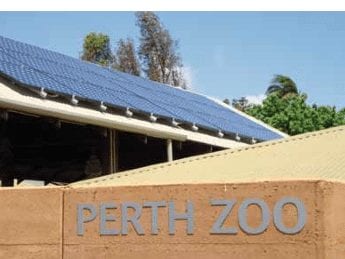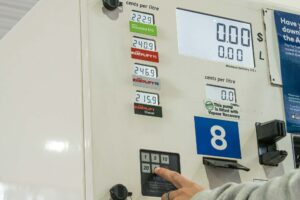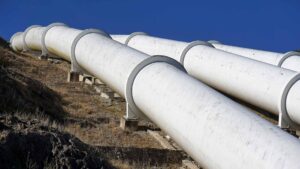The solar leasing model for rooftop solar PV that is being rolled out in Australia has underpinned the results of one of the biggest solar manufacturers in the US, and drawn the interest of banking heavyweights Credit Suisse and Citi.
SunPower, a California-based company majority owned by French energy group Total, this week narrowed its losses and beat analysts estimates because of increasing demand for residential systems, which have been boosted by solar leases, which now account for nearly ¾ of all installations in the US.
SunPower only began to offer solar leases nine months ago, but already claims one third of the Californian market – the nation’s biggest – and is signing up deals at a rate of 2MW a week. This week it announced that Citi and Credit Suisse had signed up to finance up to $325 million of lease capacity.
“The residential lease value proposition is compelling. Homeowners can purchase the best solar technology in the industry and be cash-flow positive from day 1,” CEO Tom Werner told analysts in a conference call on Wednesday.
SunPower gave a rare insight into the modeling of its solar leasing business, variations of which are being contemplated by solar firms in Australia. It says it can deliver savings of 20 per cent on electricity bills for consumers, and deliver 10 per cent net returns for financiers such as Citi and Credit Suisse.
Here’s an example of a monthly lease tat they include in their documents. It’s for a relatively large system, 7.2kW – with the ownership and maintenance remaining in the hands of SunPower or the leasing companies.
• Upfront investment – $0
• Pre-solar monthly utility bill = $297
• Post solar monthly utility bill = $51
• Lease payment = $183
• Total post-solar electricity cost = $234
• Net monthly savings = $63
“It’s “taking” solar more and more mainstream,” CFO Charles Boynton noted.
Australia was identified as one of SunPower’s key emerging markets. The company said it was growing “quite rapidly” and was one of three key markets in Asia, along with India and Japan. It was also considered one of the ‘emerging markets” – along with Africa and South America, which would account for one quarter of the company’s revenue. “We’ll target those markets … that allow us to command a 15 per cent to 20 per cent margin,” he said. “And that’s why I purposefully referenced the areas I did, because they fit that profile, Australia, Africa and obviously, including Middle East and South America.
“Solar is getting so compelling that it just makes economic sense for the country to go solar,” Werner said. “Saudi Arabia is one of those countries. I’d say the Middle East, in general. And I’d say pockets of opportunity in South America and Africa, because there’s electricity consumers who would be way better off economically, if they switch to solar.”
Werner said that the cost of producing panels had fallen 25 per cent from a year ago, and the balance of systems costs (which now account for two thirds of overall cost of solar modules) were down 20 per cent in a year. But Werner said the cost per watt was becoming less important to his customers. “The vast majority of our customers now make purchase decisions on the basis of LCOE (levellised cost of energy) or the total cost of ownership.
Another interesting aspect of the results was the interest from the corporate sector in the US for solar systems. Werner said the company had recently completed a 10MW system for Campbell Soup and had started construction of a 2MW system for Bloomberg.








